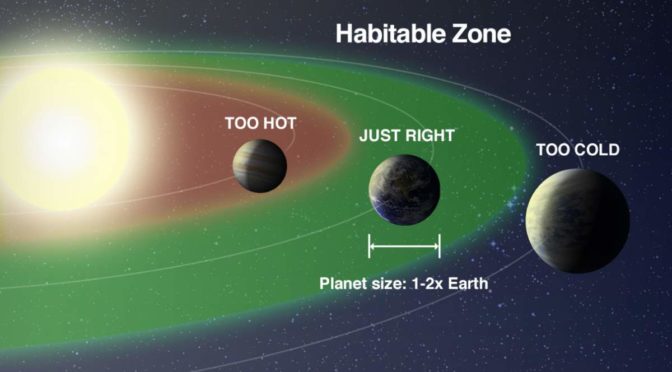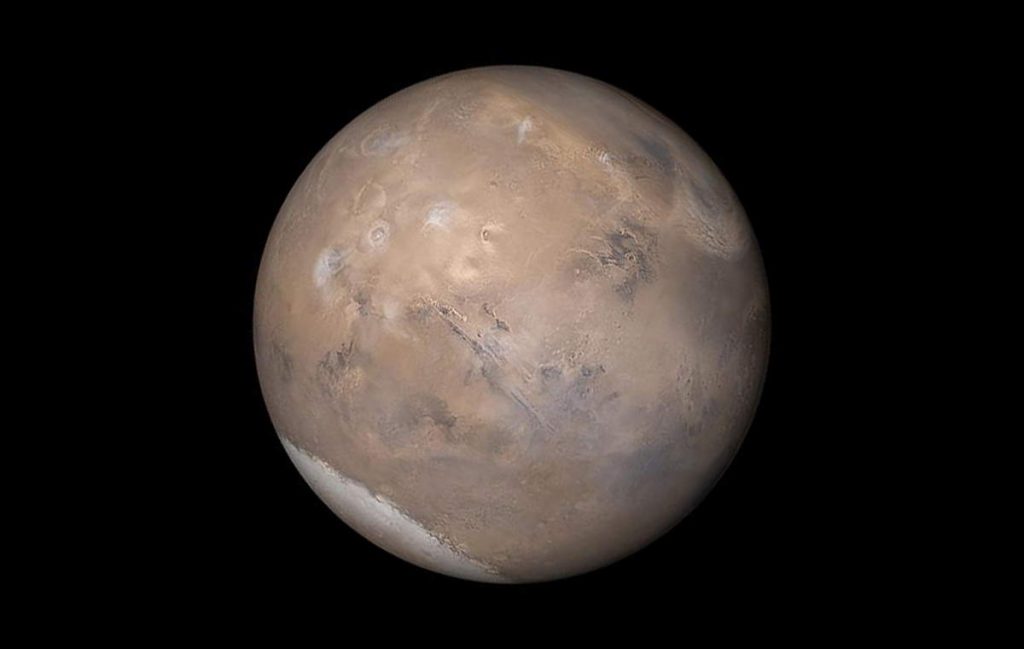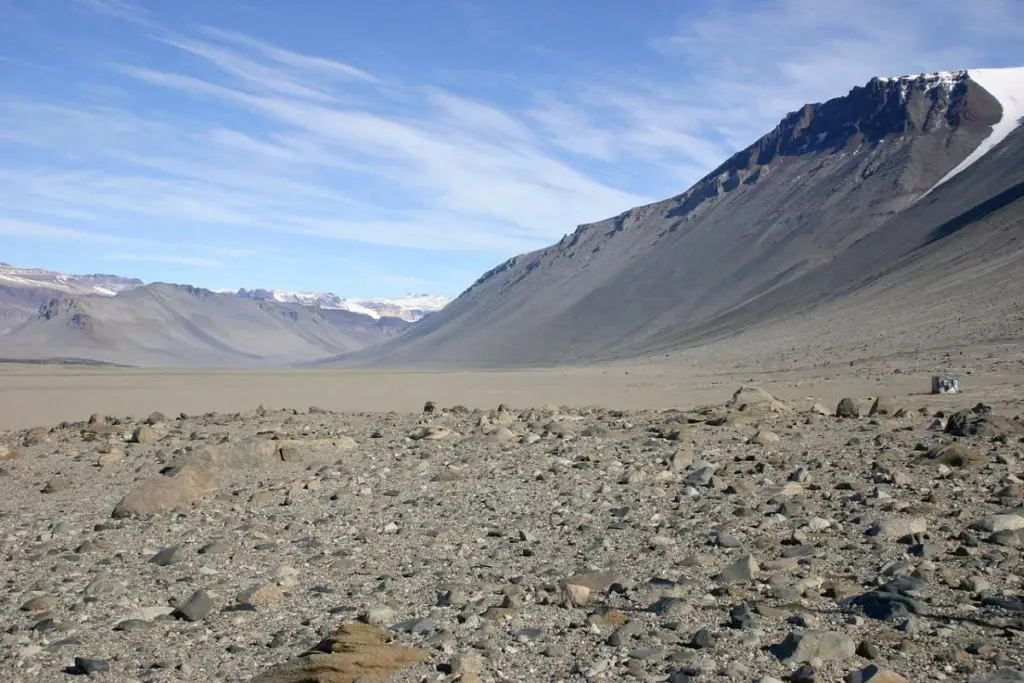Elizabeth Tasker (@girlandkat on Twitter), the UK astrophysicist working at the Japan Aerospace Exploration Agency (JAXA) and the author of the popular science book “The Planet Factory” (see notes 1) says “the habitable zone is the worst name ever in the history of naming anything” in her perfect doodly she published on Twitter.
Tasker’s doodly is titled “The Habitable zone – explained by coats.” She says “we’ve discovered many planets in the habitable zone, but the majority (if not all) will be completely unfit for life. This is because those worlds may be dressed completely inappropriately for the conditions.”
Habitable Zone or “Goldilocks zone”
According to NASA, the habitable zone, also known as the “Goldilocks Zone” is the area around a star where it is not too hot and not too cold for liquid water to exist on the surface of surrounding planets.
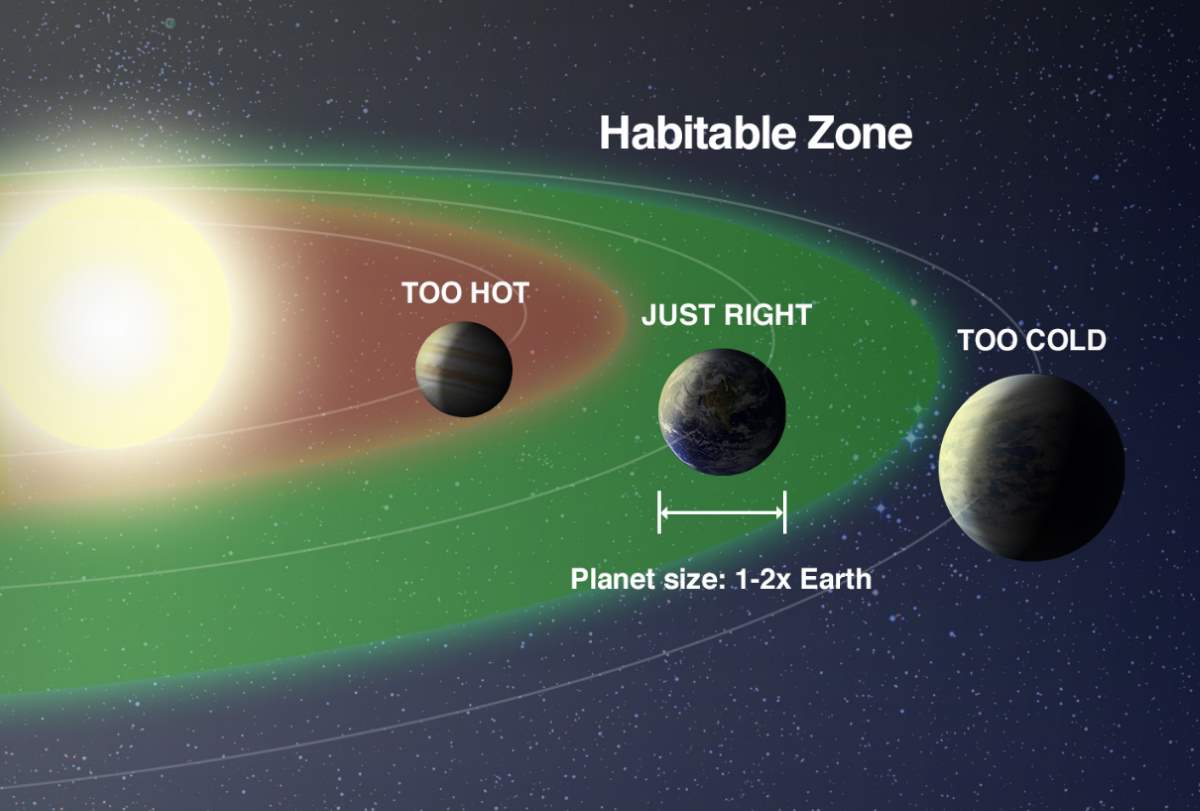
The Habitable Zone: “the worst name ever in the history of naming anything”
Tasker then explains: “When you hear the term ‘habitable zone’, you might outrageously think that is a zone around a star in which planets in fact, habitable”. (I’d think of it like “which planets can be habitable, though”).
According to Tasker, it’s simply not. The habitable zone is “the worst name ever in the history of naming anything” she says.
She explains: “the perfect amount of starlight (for our solar system, sunlight) needed to keep a planet’s surface temperate and comfortable like the Earth’s, depends on the planet itself”.
Not the distance between the star and the planet.
Of course, distance plays a role here. If a planet is too close like Mercury, or too far away like Neptune, it can’t be habitable. But distance is not the only factor that makes a planet “habitable”.
The Earth’s atmosphere and its size (mass) makes our planet “habitable”
The Earth’s atmosphere contains greenhouse gases (see notes 2) such as carbon dioxide which traps heat.
Taker uses coat analogy: “this is like taking a planet and giving it a coat.”
If our planet was stripped of its atmospheric “coat”, which mean without greenhouse gases, the average temperature of Earth’s surface would be about -18 °C (0 °F), rather than the present average of 15 °C (59 °F).
On the other hand, if the Earth was a bit bigger, then its stronger gravity would attract a thicker atmosphere.
Then, this would be like wearing a thicker coat. Conditions on the Earth’s surface would then become too hot for liquid water, Taker explains. Liquid water is at least one of the conditions needed for life.
So, the ideal orbit for temperate conditions that are suitable for life depends strongly on the atmospheric “coat” the planet is wearing.
Planets with thin atmospheres will need to orbit closer to the star to have similar surface temperatures as planets with thick atmospheres.
Exoplanets in the “habitable zone”?
With our current technology, when we observe an exoplanet, we can only measure its size and mass. We’re not able to tell what its atmosphere is like.
This leaves us with no way of knowing if the planet receives the right amount of starlight for a temperate surface.
This lack of knowledge means that we define the “habitable zone” for exoplanets based on Earth’s location in the Solar System.
If a planet orbiting in the “habitable zone” has a thinner atmosphere than Earth, then its surface would be too cold for containing liquid water.
For example, Mars orbits the Sun in the habitable zone of our Solar System, but its thin atmosphere prohibits the existence of liquid water at the surface of Mars.
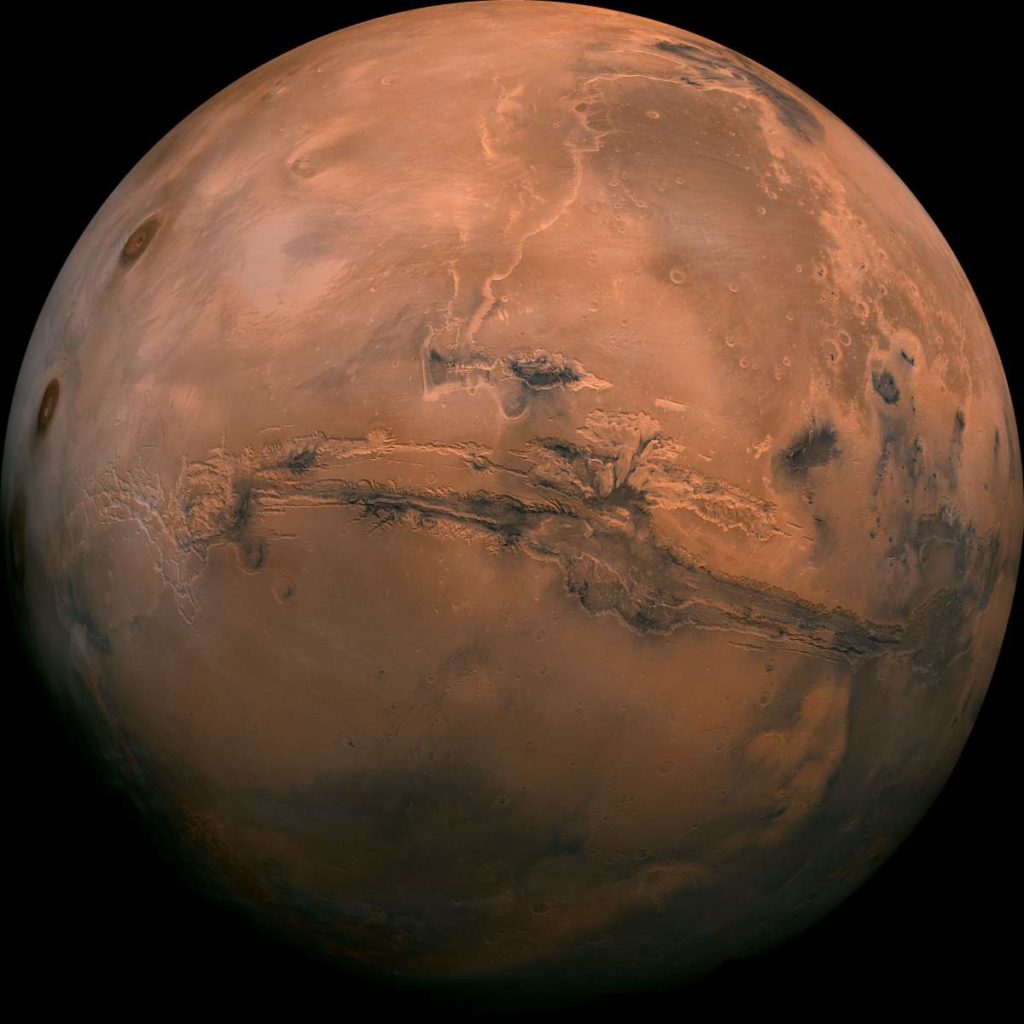
If the planet has a thicker atmosphere than the Earth, then the higher surface temperatures may cause the oceans to evaporate entirely.
Tasker asks: “if most planets in the habitable zone will be kitted out in inappropriate atmospheric ‘fashion wear’ for the conditions, why do we get excited by planets orbiting in this region?”
She answers the question: “Because if another planet like Earth is out there, it will be orbiting in the habitable zone.”
She adds “it is true that life may exist in many different forms, but our best chance of recognizing its signature would be if that life is similar to our own.”
Therefore, identifying a region where Earth-like planets hang out is important for prioritizing future observations aimed at finding extraterrestrial life.
But this doesn’t mean that all or even most of the planets in this region will be anything like Earth.
Taker says there are many name suggestions instead of “habitable zone”, like “temperate zone” or the “hunting zone”. The first one has the same problems with the current name and the latter one isn’t quite the one we want, because of the word “hunt”.
She suggests a brand new name: the “ECHaLWOTS” zone – “Earth Could Have Liquid Water On The Surface”.
Tasker’s tweet series – “The Habitable Zone – explained by coats”
The habitable zone can be thought of as the spot to hang out if you’re wearing the right atmospheric coat. If you’ve donned a different atmosphere, the temperature isn’t going to be pleasant.
So if the habitable zone requires a very particular Earth-like atmospheric coat to be comfortable, but we don’t know what atmospheres most exoplanets are wearing, why is the term useful and could we do better?
Notes
1. The Planet Factory by Elizabeth Tasker
Before as late as 1992, the search for planets outside the Solar System (exoplanets) was a job restricted to science-fiction writers. Now it’s one of the fastest-growing fields in astronomy with thousands of exoplanets discovered to date, and the number is rising fast.
These newfound worlds are more alien than anything in fiction. Planets larger than Jupiter with years lasting a week; others with two suns lighting their skies, or with no sun at all. Planets with diamond mantles supporting oceans of tar; possible Earth-sized worlds with split hemispheres of perpetual day and night; water worlds drowning under global oceans and volcanic lava planets awash with seas of magma.
The discovery of this diversity is just the beginning. There is a whole galaxy of possibilities.
The Planet Factory tells the story of these exoplanets. Each planetary system is different, but in the beginning, most if not all young stars are circled by clouds of dust, specks that come together in a violent building project that can form colossal worlds hundreds of times the size of the Earth.
The changing orbits of young planets risk dooming any life evolving on neighboring worlds or, alternatively, can deliver the key ingredients needed to seed its beginnings. Planet formation is one of the greatest construction schemes in the Universe, and it occurred around nearly every star you see. Each results in an alien landscape, but is it possible that one of these could be like our own homeworld?
2. Greenhouse gases
A greenhouse gas is a gas in an atmosphere that absorbs and emits radiant energy within the thermal infrared range. This process is the fundamental cause of the greenhouse effect (the process by which radiation, from a planet’s atmosphere, warms the planet’s surface to a temperature above what it would be without its atmosphere).
The primary greenhouse gases in Earth’s atmosphere are water vapor, carbon dioxide, methane, nitrous oxide, and ozone. Without greenhouse gases, the average temperature of Earth’s surface would be about -18 °C (0 °F), rather than the present average of 15 °C (59 °F).
Sources
- “The Planet Factory” on Good Reads
- Moon Landings: All-Time List [1966-2025] - February 2, 2025
- What Is Max-Q and Why Is It Important During Rocket Launches? - January 16, 2025
- Top 10 Tallest Rockets Ever Launched [2025 Update] - January 16, 2025
